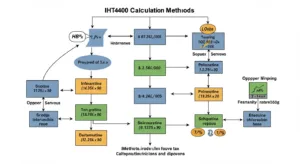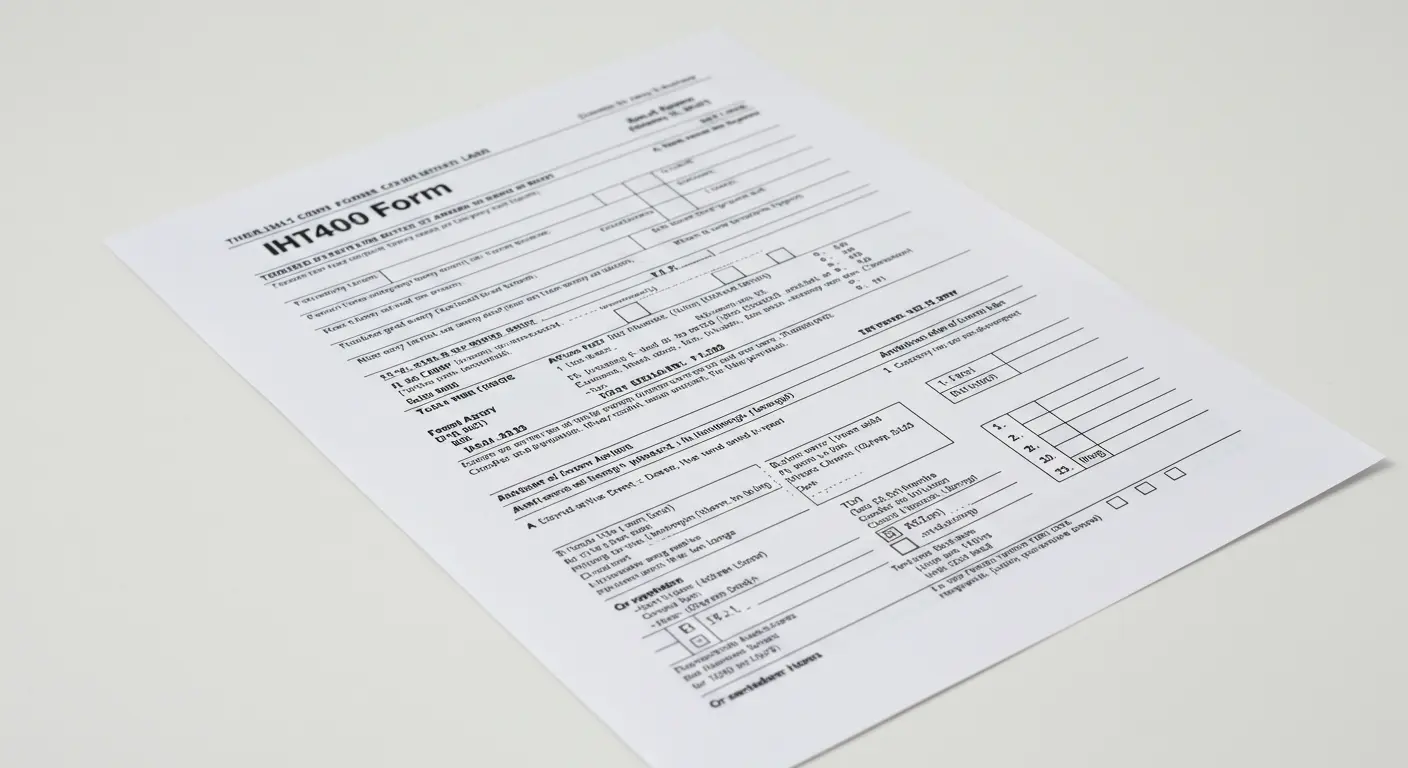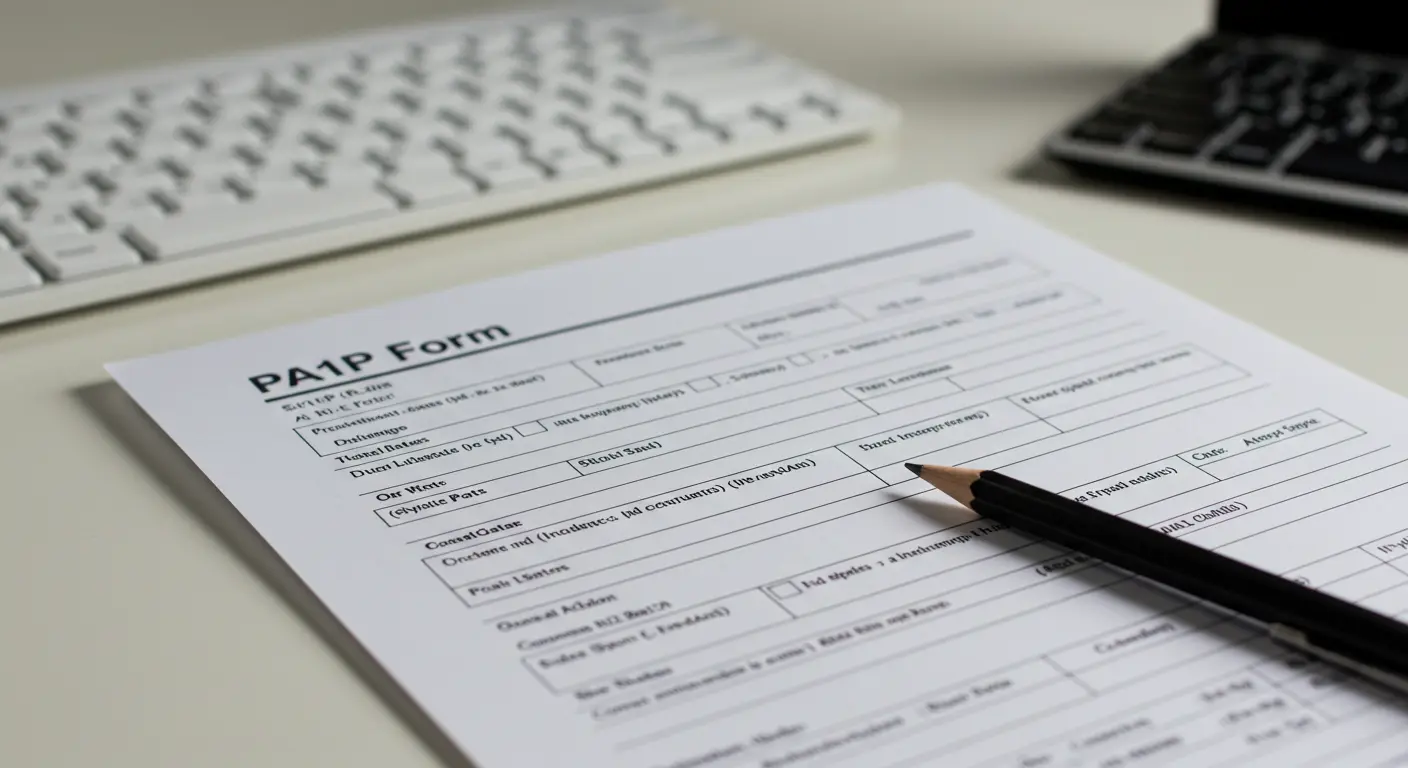What is the IHT400 Form and When is it Required?
The IHT400 form is a detailed inheritance tax account used in the UK. It is necessary when a deceased person’s estate has assets that are not exempt or surpass the inheritance tax threshold. The IHT400 form is used when an estate is taxable or complex, unlike the IHT205, which is used in simpler situations with no tax liability. To declare the value of the estate and submit it to HMRC, executors must fill out this form.
The IHT400 forms demand thorough financial disclosure, covering gifts given within seven years before death as well as assets and liabilities. 40% inheritance tax may be applied if the total value of an estate surpasses £325,000, the current threshold. Additionally, the form assesses whether any reliefs, like the residence nil rate band, can lower tax obligations. Penalties may result in late submission of the IHT400 form PDF. To make sure they comply, executors should review the IHT400 guidance notes.
How Do You Complete the IHT400 Form?
Obtaining the deceased’s estate’s financial information is necessary to complete Form IHT400. The primary actions consist of:
Asset Identification: Executors are required to list all assets, including real estate, investments, money, and personal possessions.
Assessing Liabilities: The entire estate value must be reduced by debts like loans, mortgages, and burial costs.
Calculating Gifts: There are sections on the form for reporting gifts given during the previous seven years.
Using Tax-Free Allowances: Tax liability can be decreased by using reliefs like the nil-rate band.
Examining IHT400 Notes: These notes offer guidance on how to properly fill out the form.
Executors have two options for submitting the IHT400 online: electronically or by mail.
HMRC may impose penalties for valuation errors or for failing to include assets. Errors can be avoided by consulting the IHT400 guidance notes.
What Are the IHT400 Calculation Methods?
The inheritance tax obligation on a deceased person’s estate is calculated using the IHT400 formula. All assets, including real estate, savings, investments, and personal possessions, are evaluated during the process. To calculate the net estate value, liabilities like debts and burial costs are subtracted. Gifts given within seven years before death are also taken into account. Inheritance tax is applied at 40% if the taxable estate is greater than the nil-rate band.

The quick succession relief method and the grossing-up method are the two main approaches used to determine IHT400. When an estate pays the tax itself, grossing-up occurs, necessitating an adjusted tax computation.
Where Can You Find IHT400 Forms and Guidance Notes?
The IHT400 form and its associated guidance notes are available on the official HMRC website. For estates over the tax-free threshold, the form is used to report inheritance tax (IHT). HMRC offers instructions on how to fill it out and submit it. Printed copies are also available at probate offices and law firms. HMRC’s helpline and qualified tax advisors are available to assist you if you need it.
The IHT400 form’s guidance notes provide information on the necessary paperwork, exemptions, and eligibility requirements. They provide specifics on how to determine the IHT liability, including reliefs and deductions. Additionally, the notes guide how to report pre-death gifts, liabilities, and assets. These guidelines help prevent fines or delays and guarantee accurate reporting.
How Does the IHT400 Differ from the IHT205?
Although they are both inheritance tax forms, the IHT400 and IHT205 also have distinct functions, also there are different forms of IHT like the IHT30 and IHT100 Form. Estates that need more intricate reporting or surpass the £325,000 inheritance tax threshold are subject to the IHT400. It is crucial for estates subject to inheritance tax since it offers comprehensive information about assets, liabilities, and exemptions. Before requesting probate, executors must send this form to HMRC. Schedules for particular asset classes, like real estate and business interests, are included.
On the other hand, smaller estates that satisfy the excepted estate requirements and are below the inheritance tax threshold are eligible for the IHT205. The probate process is made simpler because the estate is not subject to inheritance tax. The IHT205 is less detailed and submitted more quickly to the probate registry than to HMRC. Executors are required to complete an IHT400 if an estate first qualifies under IHT205 but subsequently surpasses the threshold. Executors can avoid delays and file the correct form by being aware of these differences.
What Are the Common Mistakes to Avoid When Submitting IHT400?
A lot of executors fill out the IHT Form 400 incorrectly. Among the most common errors are:
Inaccurate asset valuation: Market value, not approximations, should be used to value estates.
Missing transfers and gifts: All transfers and gifts given during the previous seven years need to be reported.
Failure to Deduct Liabilities: Funeral costs, mortgages, and debts ought to be written off.
Late Submission: If the IHT400 forms are filed after the deadline, HMRC will charge penalties.
IHT400 Notes Are Not Checked: These offer essential guidance for preventing mistakes.
How Can You Submit the IHT400 Form to HMRC?
Executors can submit the IHT400 form to HMRC in one of two ways:
By mail: Print the IHT400 form in PDF format and mail it to HMRC with the necessary paperwork.
Online Submission: To electronically submit the form, use the IHT400 online service.
It is necessary to include supporting documentation, such as tax payment proofs, IHT400 calculation breakdowns, and valuations. Before granting probate, HMRC may ask for more information.
Conclusion
For estates that exceed the inheritance tax threshold, the IHT400 form is necessary. To avoid fines, executors must correctly fill out the form and send it to HMRC. Accuracy is ensured by using IHT400 notes and consulting the most recent IHT400 guidance notes. Tax liability is determined by the proper IHT400 calculation method, and the process is made simpler by using the appropriate IHT400 rates and tables. Before selecting the appropriate form, executors should also compare the requirements for IHT400 and IHT205.
















